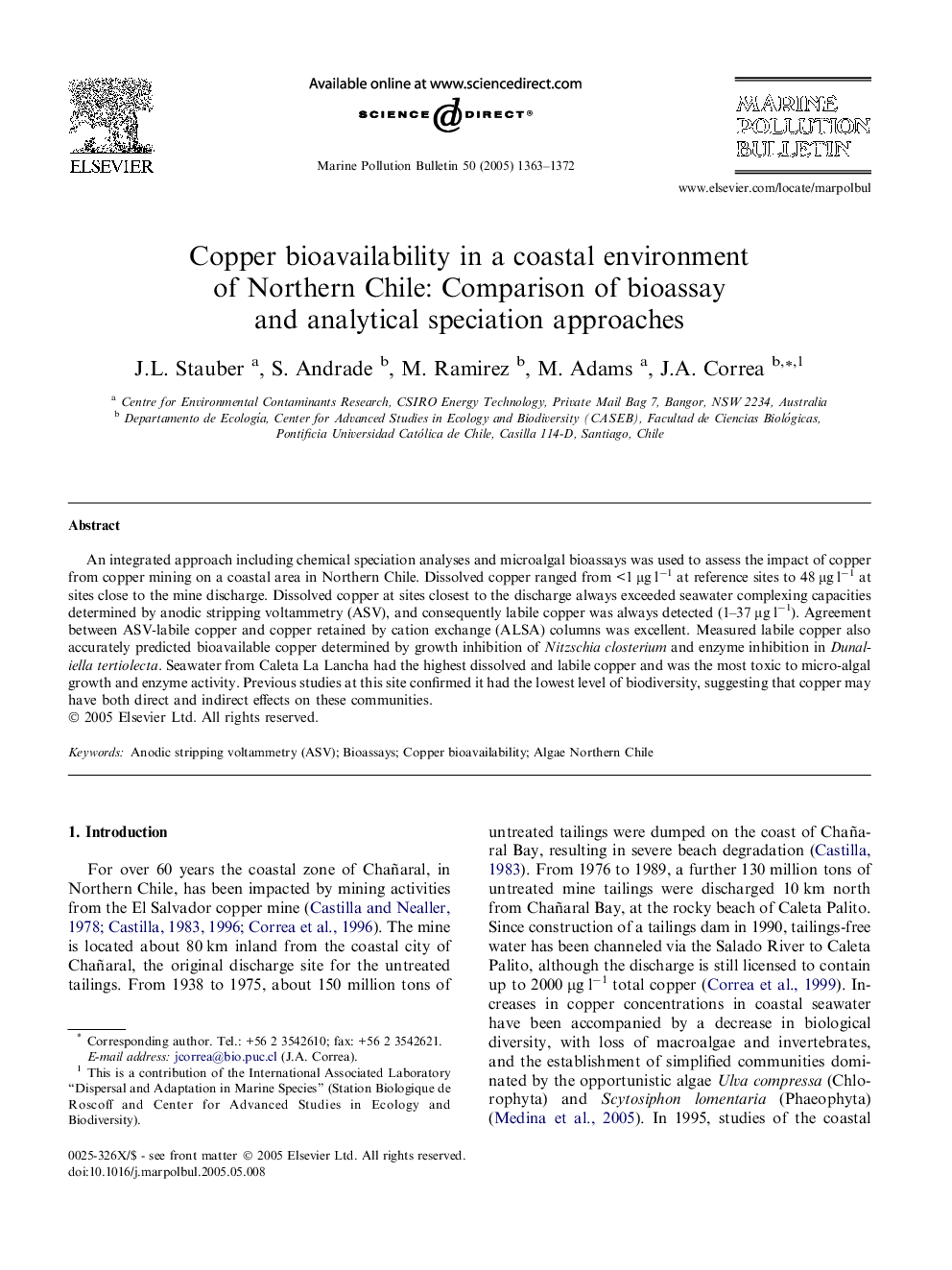| Article ID | Journal | Published Year | Pages | File Type |
|---|---|---|---|---|
| 9466007 | Marine Pollution Bulletin | 2005 | 10 Pages |
Abstract
An integrated approach including chemical speciation analyses and microalgal bioassays was used to assess the impact of copper from copper mining on a coastal area in Northern Chile. Dissolved copper ranged from <1 μg lâ1 at reference sites to 48 μg lâ1 at sites close to the mine discharge. Dissolved copper at sites closest to the discharge always exceeded seawater complexing capacities determined by anodic stripping voltammetry (ASV), and consequently labile copper was always detected (1-37 μg lâ1). Agreement between ASV-labile copper and copper retained by cation exchange (ALSA) columns was excellent. Measured labile copper also accurately predicted bioavailable copper determined by growth inhibition of Nitzschia closterium and enzyme inhibition in Dunaliella tertiolecta. Seawater from Caleta La Lancha had the highest dissolved and labile copper and was the most toxic to micro-algal growth and enzyme activity. Previous studies at this site confirmed it had the lowest level of biodiversity, suggesting that copper may have both direct and indirect effects on these communities.
Related Topics
Physical Sciences and Engineering
Earth and Planetary Sciences
Oceanography
Authors
J.L. Stauber, S. Andrade, M. Ramirez, M. Adams, J.A. Correa,
